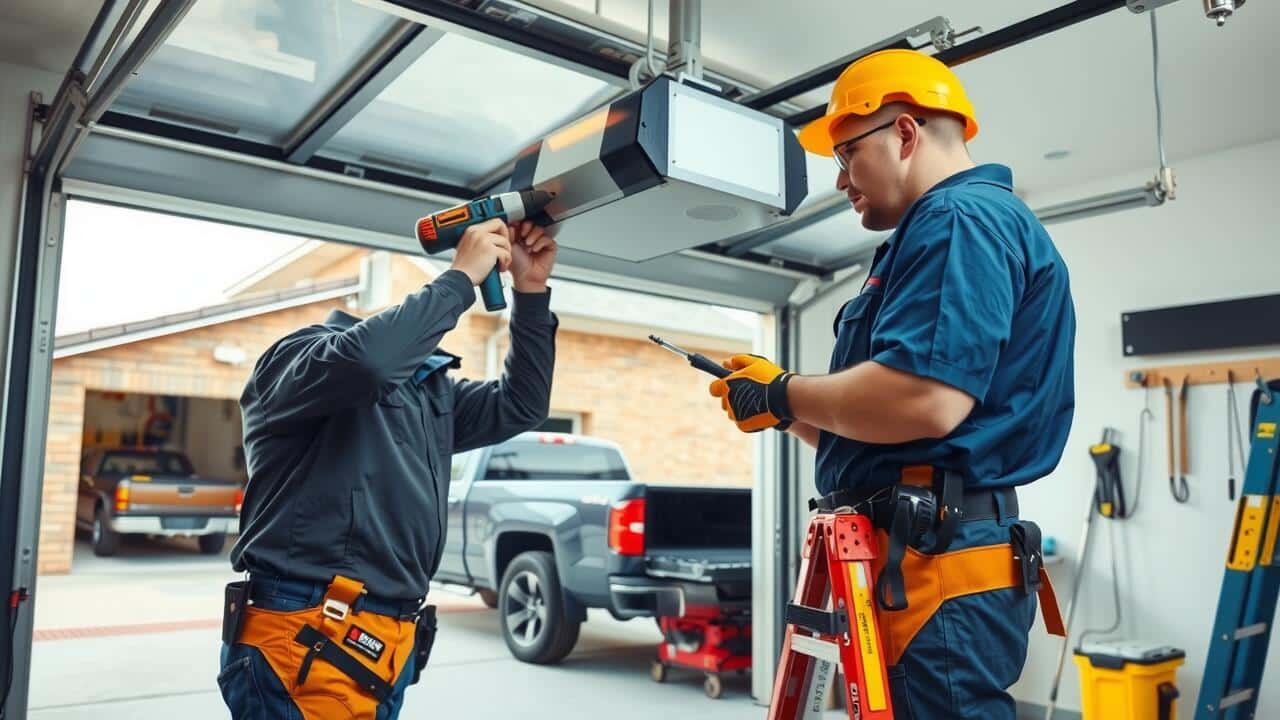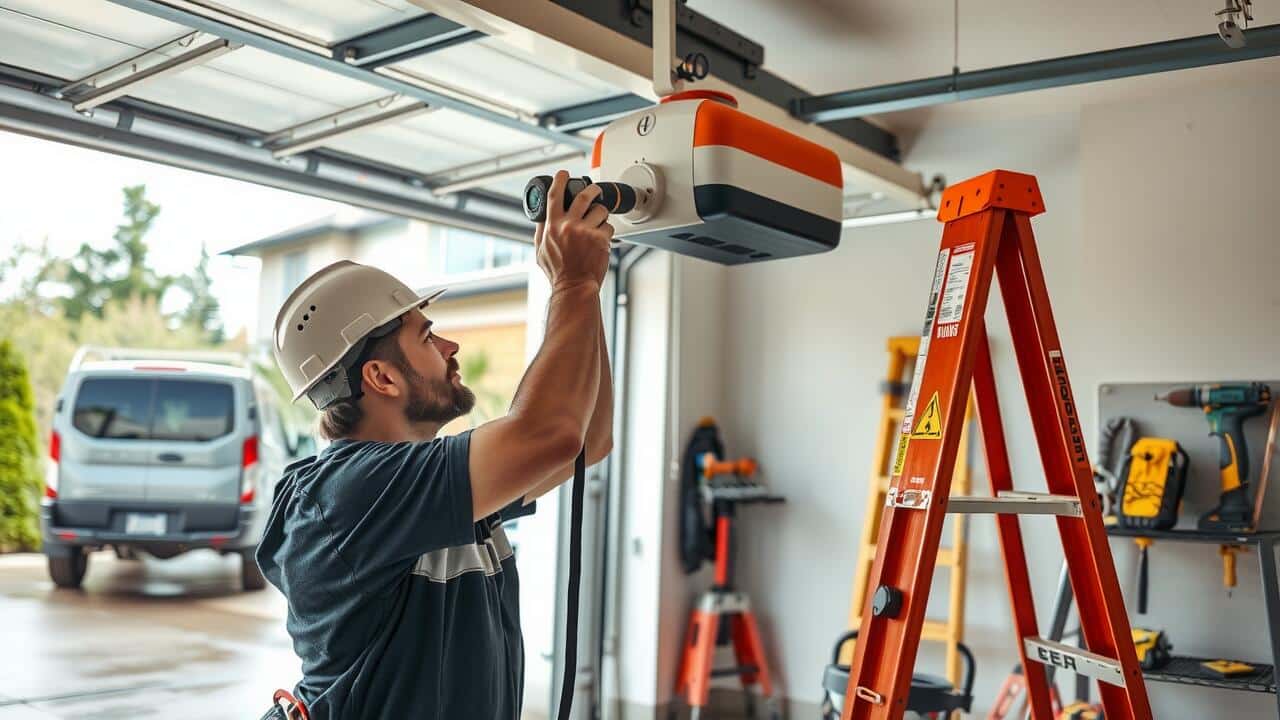San Antonio Garage Doors 4 Less offers expert garage door opener installation services designed to enhance the convenience and security of your home. Our experienced technicians are skilled in installing a wide range of reliable and high-quality garage door openers, ensuring that you find the perfect fit for your specific needs. We take pride in our attention to detail and commitment to customer satisfaction, guiding you through the selection process and providing professional installation that adheres to safety standards. With our services, you can enjoy the ease of automated access to your garage, all while knowing your property is well-protected. Trust San Antonio Garage Doors 4 Less for a seamless garage door opener installation that elevates your home’s functionality.
Setting Up Safety Features
When installing a garage door opener, setting up safety features is essential. Begin by positioning the safety sensors on each side of the garage door, approximately six inches from the floor. These sensors work together to create an invisible beam. If anything interrupts this beam while the door is closing, it will stop and reverse, preventing accidents and damage. Secure the sensors to the wall using brackets and screws. Ensure the wiring is intact and properly routed to avoid interference with the opener’s operation.
After mounting the sensors, test their functionality to make sure they are aligned correctly. It’s crucial to have a clear beam between the two sensors. Adjust the angle if necessary. Additionally, consider integrating a keypad or remote control for added convenience. When programmed, these devices allow you to operate the garage door opener from afar. Following these guidelines helps ensure the safety of both the garage door system and those around it.
Installing Safety Sensors
To ensure optimal safety, positioning the sensors correctly is crucial. Start by determining the appropriate location, typically near the garage door tracks. These sensors should be installed on both sides of the door, approximately 6 inches above the ground. Use the provided fasteners to secure the mounting brackets, ensuring they are level and properly aligned at an angle that facilitates a clear light beam between them. This setup helps to detect any motion that may obstruct the door’s path while closing.
After securing the sensors, it’s important to connect the wiring carefully. Follow the manufacturer’s instructions for wiring, checking compatibility with your specific garage door opener model. Use the appropriate tools for cutting and threading the wire through the safety features, ensuring a neat and organized installation. Verify that the sensors are functioning correctly by observing the indicator lights; they should be steady when properly aligned and detect any interruptions in the light beam.
Finalizing the Installation
Once the components of your garage door opener are securely installed and properly aligned, it’s time to finalize the setup. Begin by reconnecting the power supply and using a laser level to ensure everything is vertically aligned. Verify the placement of the opener on the rafters, making necessary adjustments if it appears uneven. Tighten each screw with a wrench to secure all parts, including the switches that control the door’s movement. Before proceeding, double-check that all connections are firm and that there are no loose ends that could lead to complications down the line.
Next, log in to the setup app on your computer or Android device to configure settings as desired. Enter your password and navigate through the interface to finalize preferences. Test the garage door opener to ensure it operates smoothly. Using a stepladder for better access, perform a thorough examination of the entire system while observing its response during the opening and closing cycles. If any issues arise, utilize the eye and height measurements to guide your troubleshooting efforts effectively. Keeping a detailed paper log of your observations during this phase can help identify patterns and address concerns down the road.
Testing the System
After completing the installation of your garage door opener, it’s crucial to test the system to ensure everything is functioning correctly. Begin by checking the power supply and ensuring that the electrical outlet is operational. Power outages or loose connections can lead to the opener malfunctioning. Verify the settings on the control panel, and make sure the wall-mounted button operates smoothly. If necessary, consult the manufacturer’s manual for any specific instructions regarding the initial setup.
Next, observe the garage door as it opens and closes. It should move along the tracks without any hesitation, making sure to listen for any unusual sounds that may indicate potential issues. Adjust the travel limit settings if the door does not fully open or close. A proper adjustment will help prevent future hazards and prolong the longevity of your garage door opener. Also, take a moment to test the safety sensors by placing an object in the doorway and ensuring the door stops immediately. This precaution helps to avoid accidents and ensures the safety features work as intended.
Troubleshooting Common Issues
When issues arise during the operation of a garage door opener, identifying and resolving the problems quickly is essential for safety and convenience. Common problems may include a door that doesn’t open or close correctly, unusual noises during operation, or a failure of the remote control system. Inspect the battery in the remote or ensure that there are no obstructions blocking the door’s path. A quick check of the wiring and connections on the opener unit can also reveal any loose or damaged components that might need attention.
Temperature fluctuations can affect the performance of your garage door opener, particularly in regions with extreme weather. For example, cold temperatures can hinder lubricants, causing the door mechanisms to stutter or stick. If issues persist despite troubleshooting, consider whether the pulley system needs adjustment or if the drive mechanism requires maintenance. Regular inspections will help maintain dependability and reliability, preventing future problems that might disrupt daily routines.
Identifying Potential Problems
When installing a garage door opener, various issues may arise that can affect the system’s dependability. One common problem relates to the safety sensors not aligning properly. Misalignment can lead to safety hazards, preventing the door from closing entirely and creating a potential risk for vehicles and pedestrians. Checking the sensors for obstructions or shifting can often resolve this issue. Regular maintenance and visual inspections can also enhance the longevity of the system.
Another potential challenge is associated with the garage door’s pulley system and straps. If these components wear out or break, it can lead to performance issues. The strain on these parts may cause them to pull unevenly, resulting in an inconsistent opening and closing motion. Inspecting these elements regularly and ensuring that they are in good condition is crucial for seamless operation. Manufacturers like The Genie Company provide useful guidance on maintenance and troubleshooting, making it easier for homeowners to handle such concerns effectively.
FAQS
What safety features should I set up when installing a garage door opener?
When installing a garage door opener, it’s essential to set up safety features such as safety sensors, which detect objects in the door’s path, and an emergency release mechanism that allows you to manually operate the door in case of power failure.
How do I install safety sensors for my garage door opener?
To install safety sensors, mount them on either side of the garage door, typically about six inches off the ground. Ensure they are aligned directly across from each other and connected to the garage door opener following the manufacturer’s instructions.
How can I finalize the installation of my garage door opener?
Finalizing the installation involves ensuring all components are securely fastened, making any necessary adjustments to the door’s balance, and connecting the opener to a power source. It’s also important to install any wall controls or remote access features.
What steps should I take to test the garage door opener system?
To test the system, use the remote control and any wall-mounted buttons to open and close the door. Check the safety sensors by placing an object in the door’s path to ensure it reverses. Additionally, listen for any unusual sounds during operation.
What are some common issues I might encounter with my garage door opener?
Common issues include the garage door not opening or closing, the remote not working, misaligned safety sensors, or unusual noises during operation. It’s important to troubleshoot these issues by checking connections, adjusting the sensors, or consulting the user manual for guidance.



